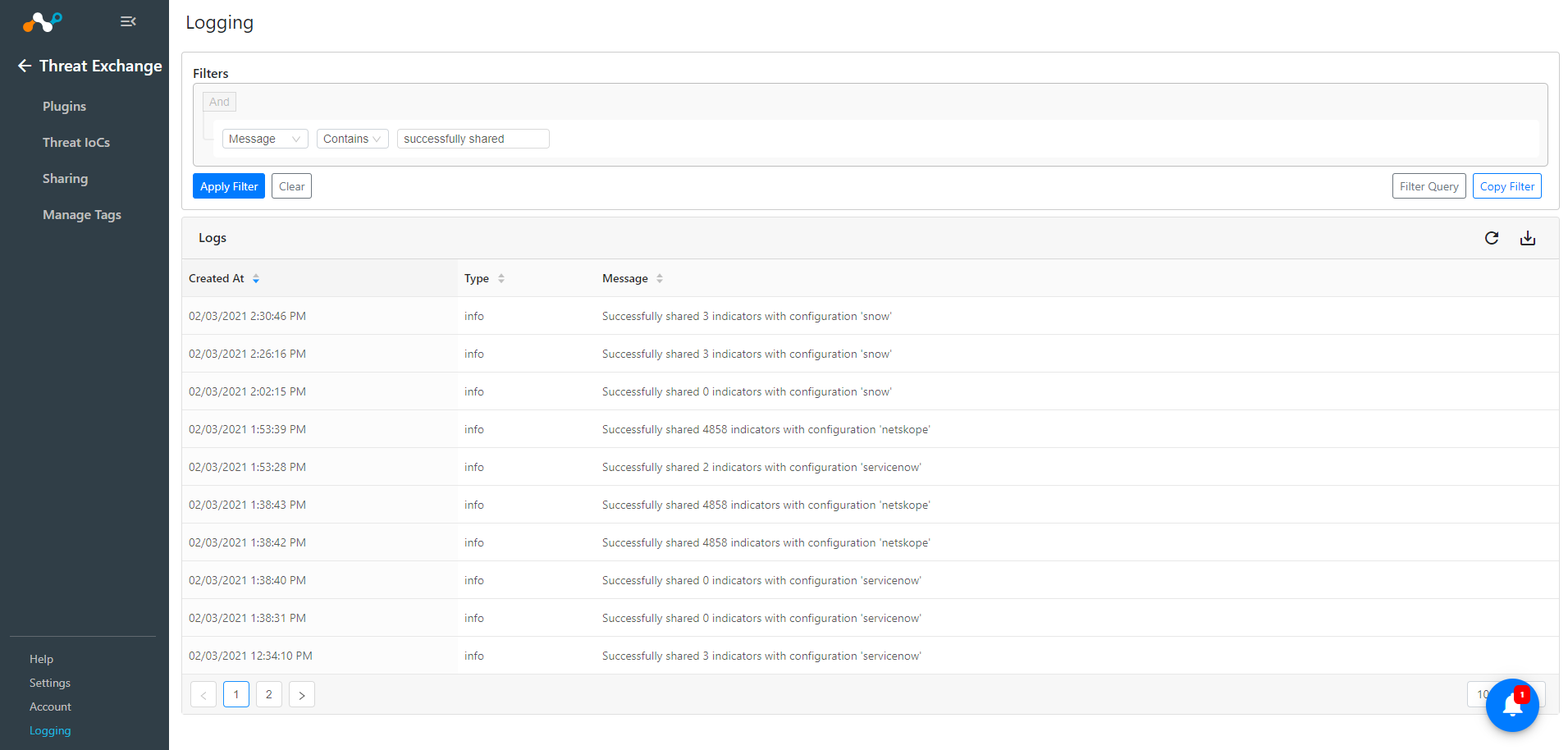ServiceNow Plugin for Threat Exchange
This document explains how to configure the ServiceNow Threat Intelligence Plugin integration with the Cloud Threat Exchange module of the Netskope Cloud Exchange platform. This integration allows for sharing of URLs and file hashes with Netskope that has been identified by ServiceNow.
To complete this configuration, you need:
A Netskope Tenant (or multiple, for example, production and development/test instances).
A Secure Web Gateway subscription for URL sharing.
A Threat prevention subscription for malicious file hash sharing.
A Netskope Cloud Exchange tenant with the Threat Exchange module already configured.
A ServiceNow instance with admin access
Create a custom File Profile.
Create a Malware Detection Profile.
Create a Real-time Protection Policy.
Create a Service Now user.
Configure a ServiceNow Plugin.
Configure sharing between Netskope and ServiceNow.
Validate the ServiceNow Plugin.
Click play to watch a video.
In the Netskope UI, go to Policies , select File , and click New File Profile.
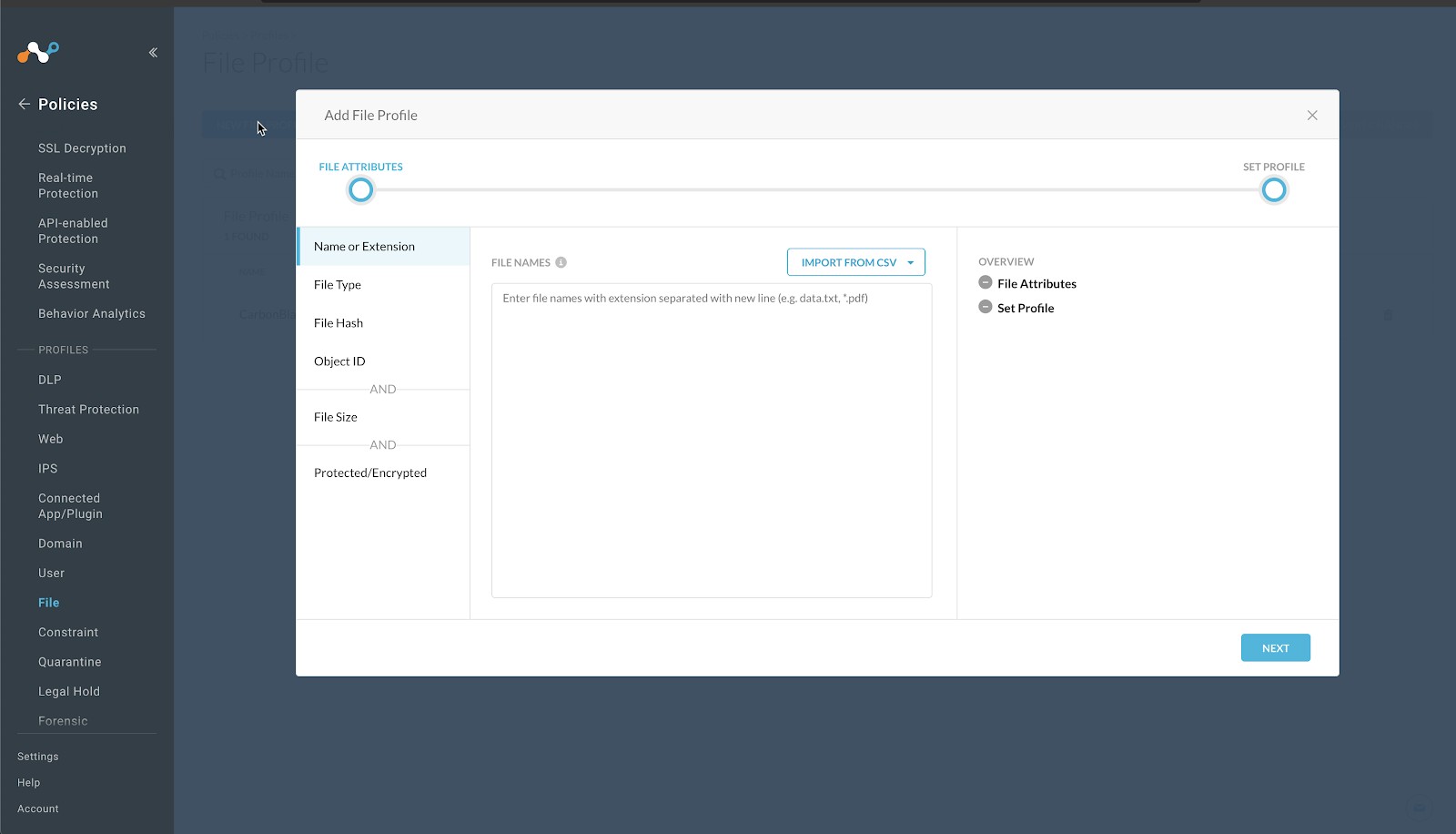
Click File Hash in the left panel, select SHA256 from the File Hash dropdown list.
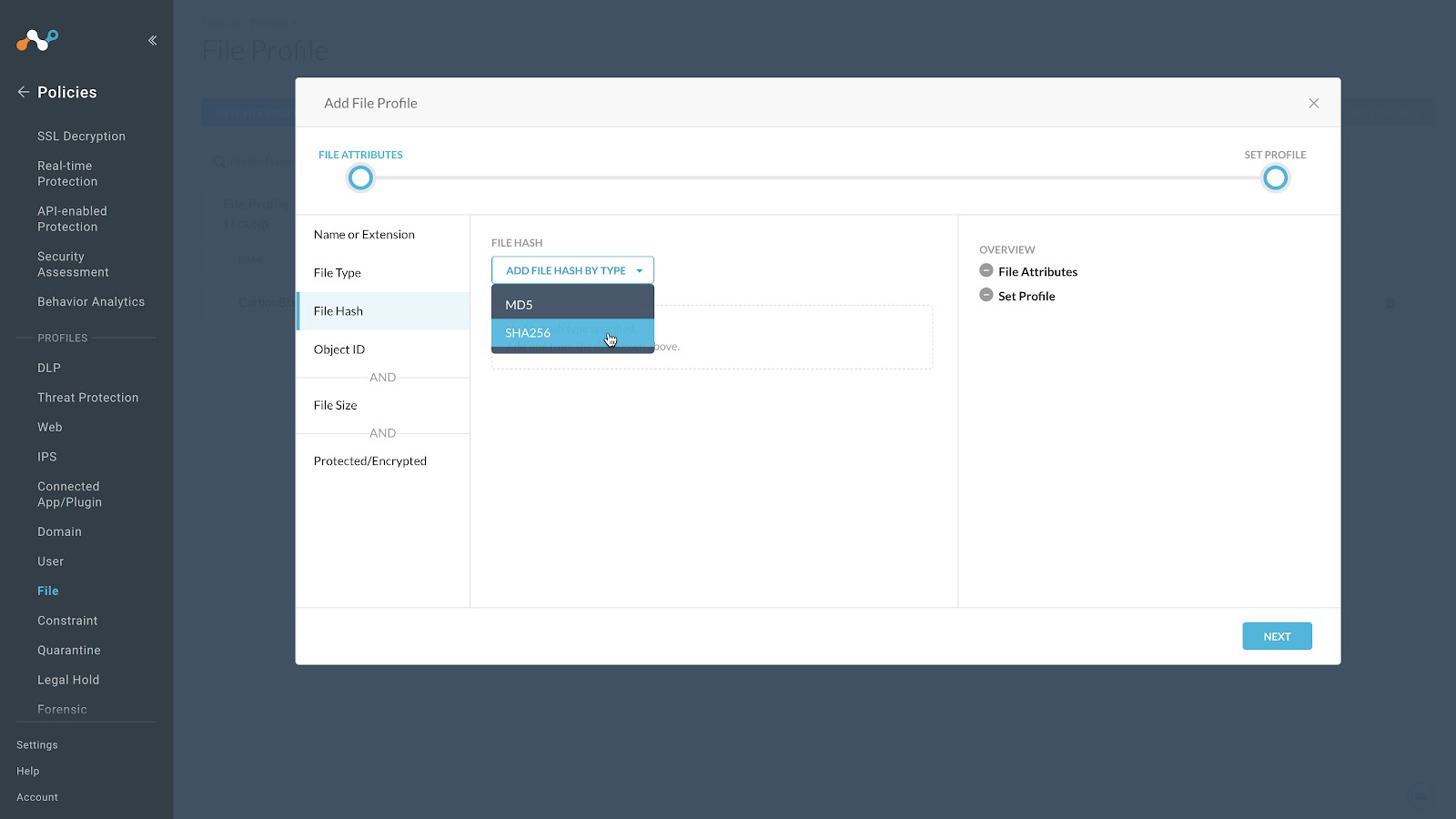
Enter a temporary value in the text field. Netskope does not support progressing without having a value in this field, and recommends entering a string of 64 characters that consists of the character
f. For example,ffffffffffffffffffffffffffffffffffffffffffffffffffffffffffffffff. This will have a very low possibility of matching a valid file format.
Click Next.
Enter a Profile Name and a Description. We recommend not having blank spaces in your profile name; use underscores for spaces.
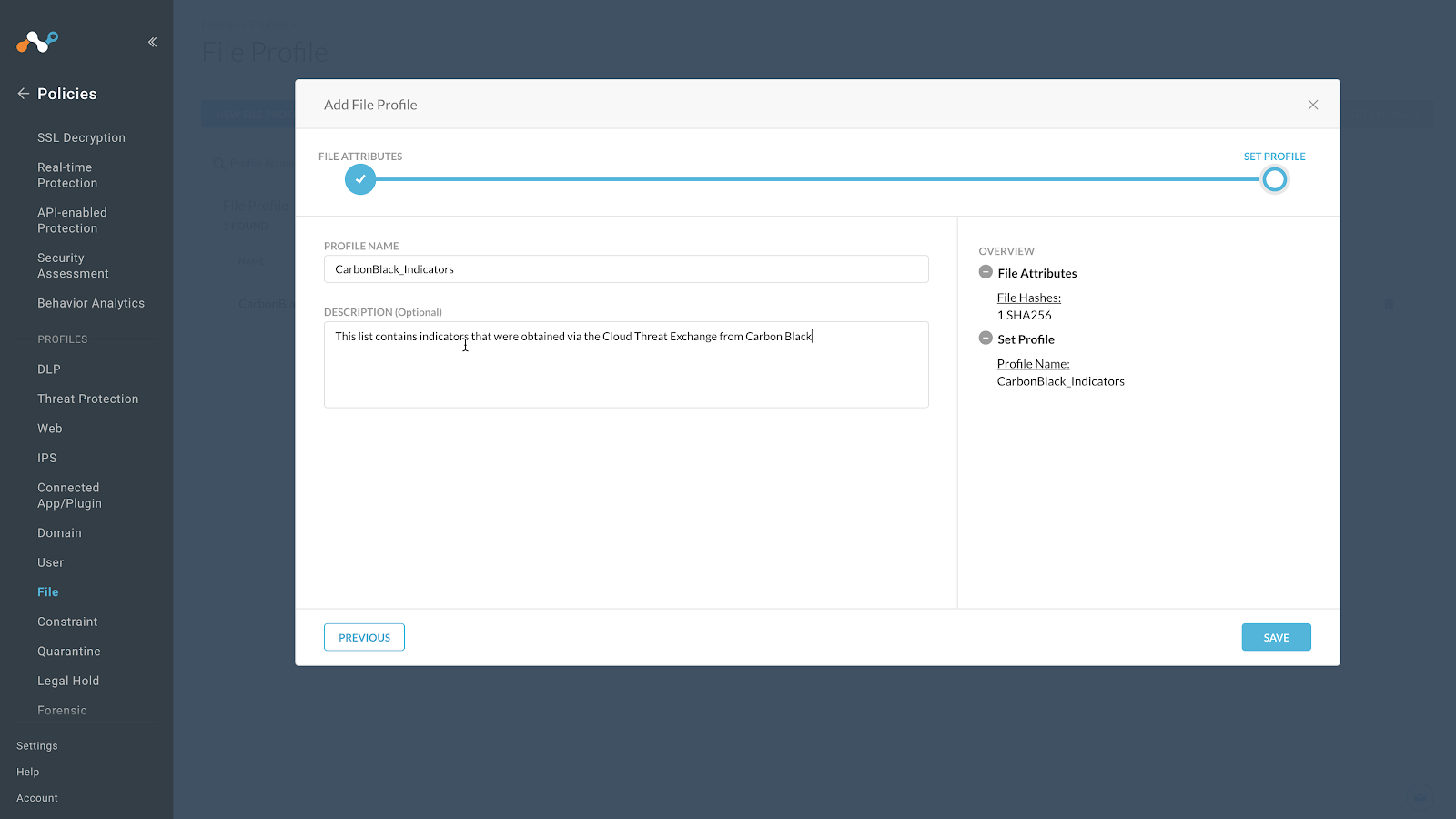
Click Save.
To publish this profile into the tenant, click Apply Changes in the top right.
In the Netskope UI, go to Policies, select Threat Protection , and click New Malware Detection Profile.
Click Next.
Note
For this configuration example, we will be using the intelligence for this list as a block list. Netskope does support inclusion of both allow and block lists in the threat profiles.
Click Next again.
Select the File Profile you created in the previous section and click Next.
Enter a Malware Detection Profile name and click Save Malware Detection Profile.
To publish this profile in the tenant, click Apply Changes in the top right.
In the Netskope UI, go to Policies > Real-time Protection.
Note
The policy configured here is just an example. Modify as appropriate for your organization.
Click New Policy and select Threat Protection.
For Source, leave the default (User = All Users)
For Destination: select Category
The Category section expands and allows you to search and select categories. Click Select All.
When finished, click outside of the Category section.
When the Activities & Constraints section opens, click Edit.
Select Upload and Download, and then click Save.
For Profile & Action, click in the text field.
Select the Malware Detection profile you created in the previous section.
For the Severity Levels, change all of the Actions settings from
Action: AlerttoAction: Block.Select a template to choose which block message is sent to the user.
For Set Policy, enter a descriptive Policy Name.
Click Save in the top right to save the policy.
Choose the To the top option when it appear. (Or appropriate location in your security policy)
To publish this policy into the tenant, select Apply Changes in the top right.
Log in to your ServiceNow Instance with admin access.
Go to System Security > Users and Groups > Users.
Click New.
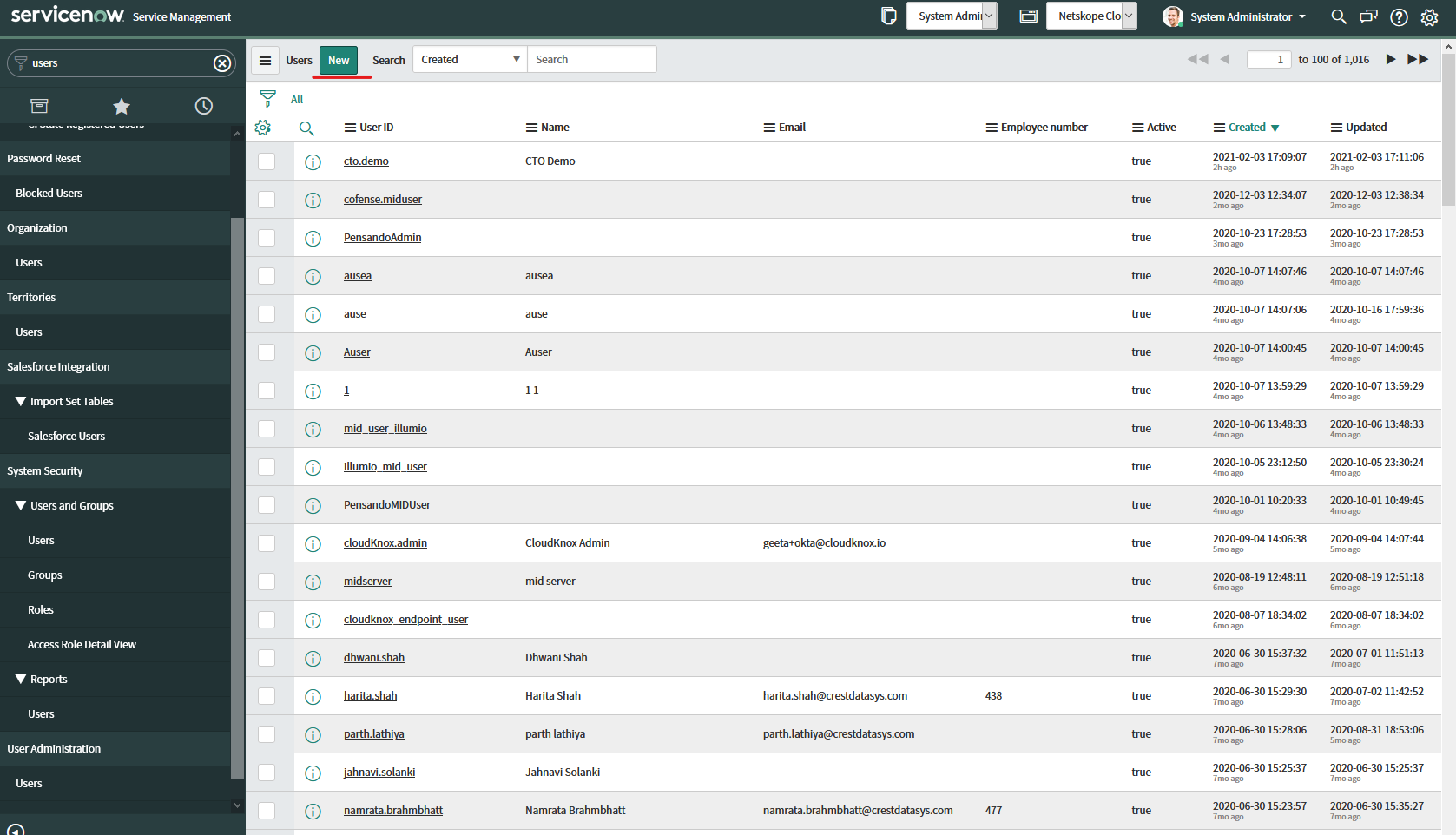
Enter the required information and make note of the User ID and Password. Click Submit.
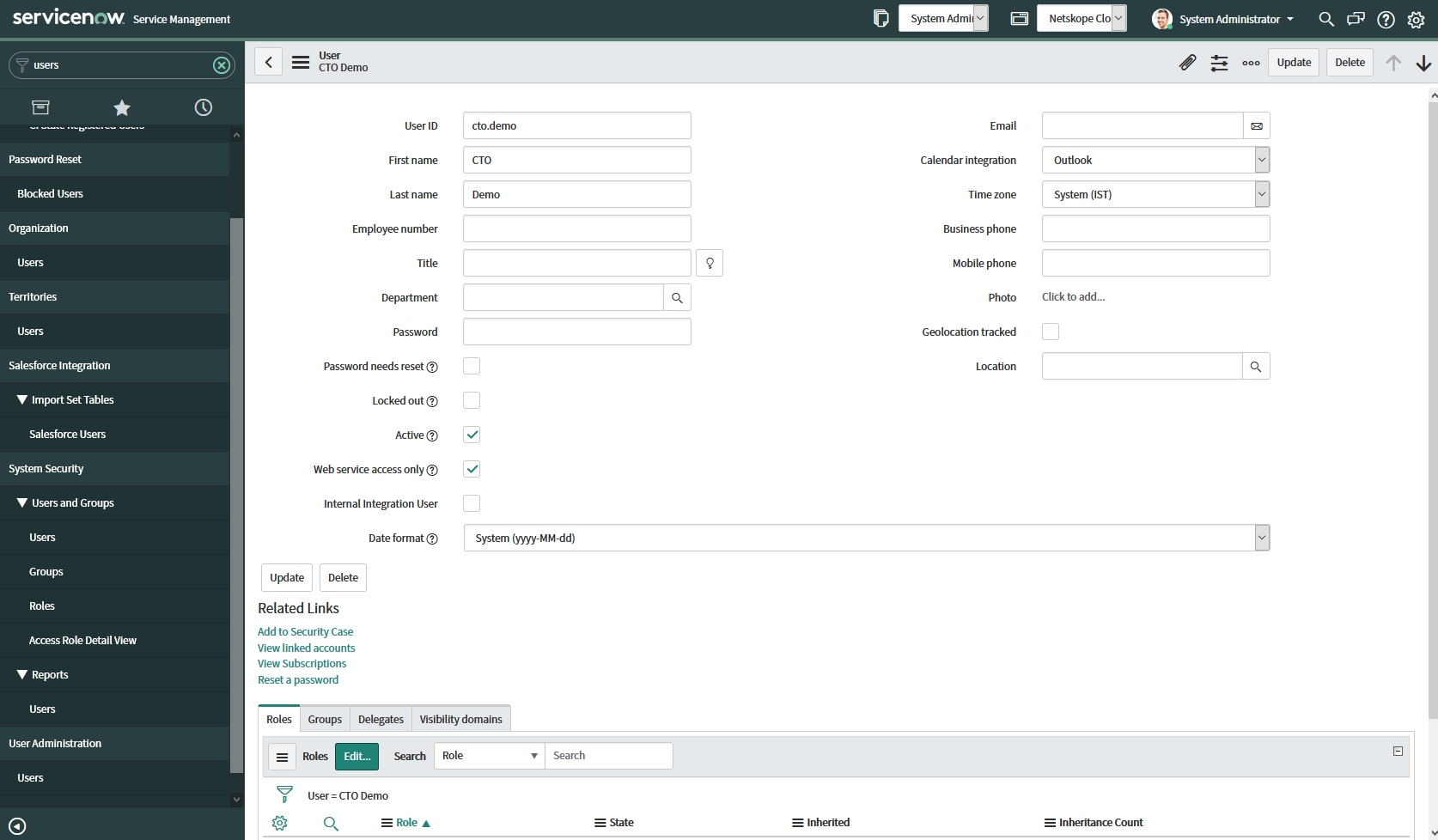
On the Roles tab, click Edit….
Add the sn_ti.observable.admin role and click Save.

In Cloud Exchange, go to Settings and click Plugins.
Search for and select the ServiceNow plugin box to open the plugin creation page.
Enter the Configuration Name
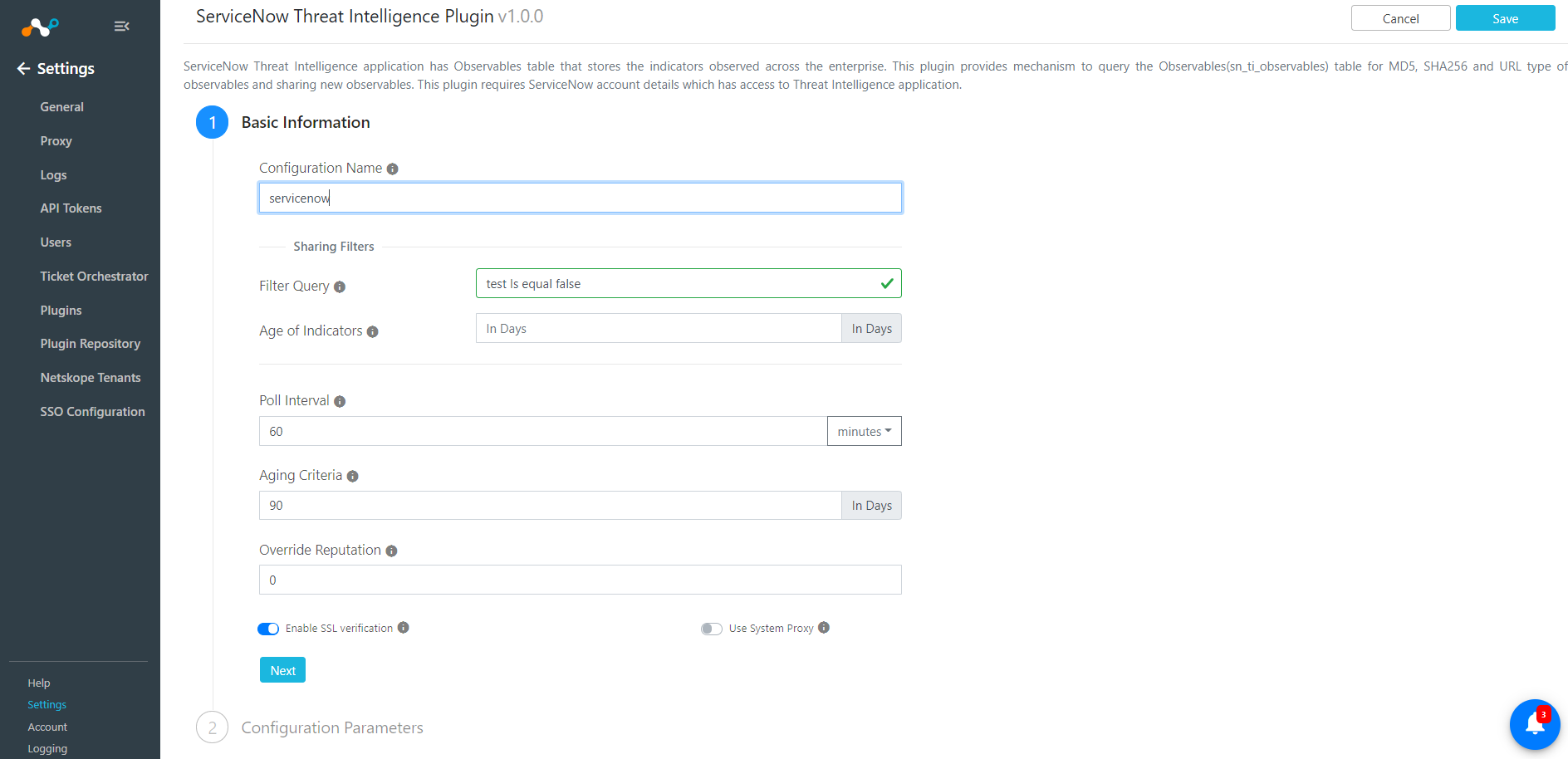
Adjust the Poll Interval to appropriate value: Suggested is 5+ minutes.
Click Next.
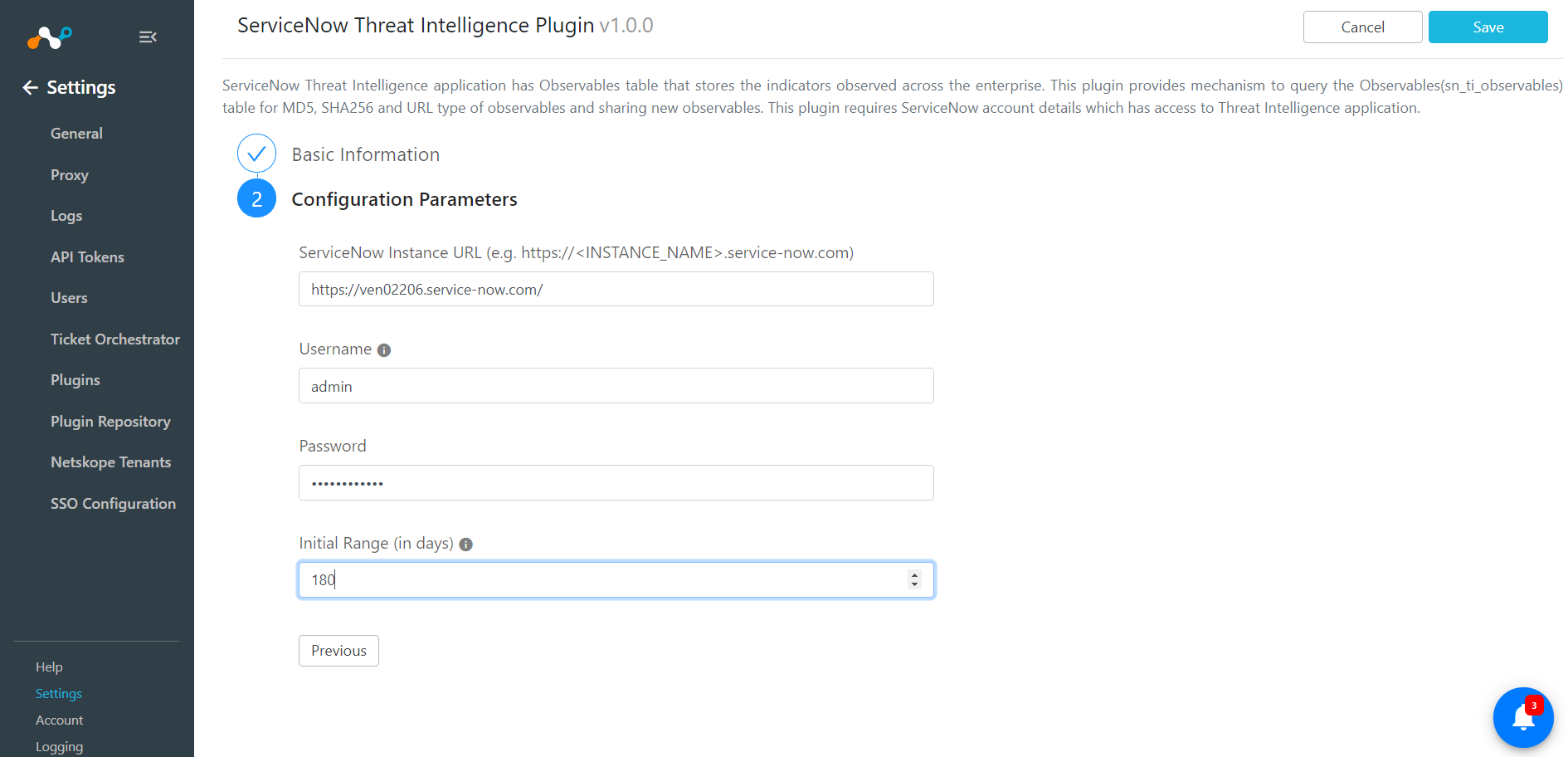
Enter your ServiceNow Instance URL.
Enter the Username and Password you obtained when creating a ServiceNow user.
Enter an Initial Range (in days) to fetch indicators.
Click Save.
Go to Threat Exchange and select Sharing. The Sharing page displays the existing relationships for each sharing configuration in grid view as shown below. The Sharing page also has inputs to configure new sharing from one plugin to another.

Click Add Sharing Configuration, and in the Source Configuration dropdown list, select ServiceNow.
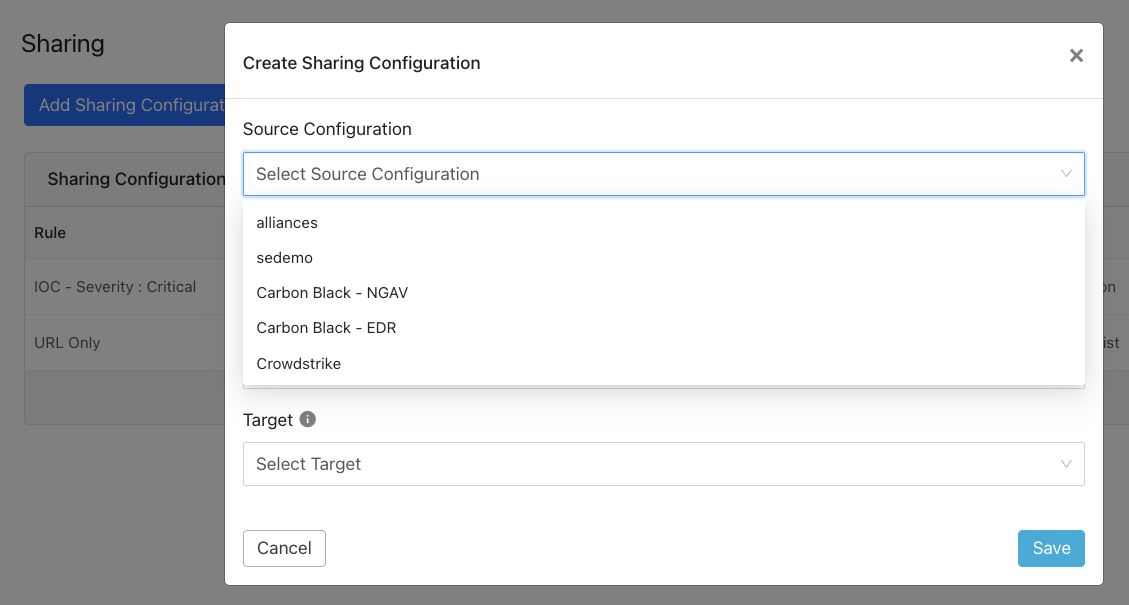
Select a Business Rule, and then select Netskope for the Destination Configuration. Sharing configurations are unidirectional. data obtained from one plugin is shared with another plugin. To achieve bi- or multi-directional sharing, configure each separately.

Select a Target. Each plugin will have a different target or destination for the IoC.
Click Save.
Repeat steps 2-5, but select Netskope as the Source Configuration and ServiceNow as the Destination Configuration.
Click Save.
Adding a new sharing configuration on the active source poll will share the existing IoCs of the source configuration to the destination configuration. Whenever a new sharing configuration is built, all the active IoCs will also be considered for sharing if they match the source/destination combination.
Note
Plugins that do not have API for ingesting data cannot receive threat data. This is true of the installed plugin API Source, which provides a bucket associated with an API endpoint for remote 3rd-party systems to push data to. Once a Sharing policy has been added, it takes effect.
After a sharing configuration has been created, the sharing table will show the rule being invoked, the source system providing the potential IoC matches, the destination system that will receive matching IoC, and the target applicable to that rule. Multiple Sharing configurations can be made to support mapping certain IoC to multiple targets even on the system destination system.
Modify, Test, or Delete a Sharing Configuration
Each configuration supports 3 actions:
 |
Edit the rule by clicking on the pencil icon.
Test the rule by clicking on the synchronization icon. This tests how many IoC will actually be sent to the destination system based on the timeframe and the rule.
Delete the rule by clicking on the garbage can icon.
In order to validate the integration you must have Netskope Alerts and/or MISP attributes/indicators. Polling Intervals are defined during plugin configuration
Go to Threat Exchange > Threat IoCs.
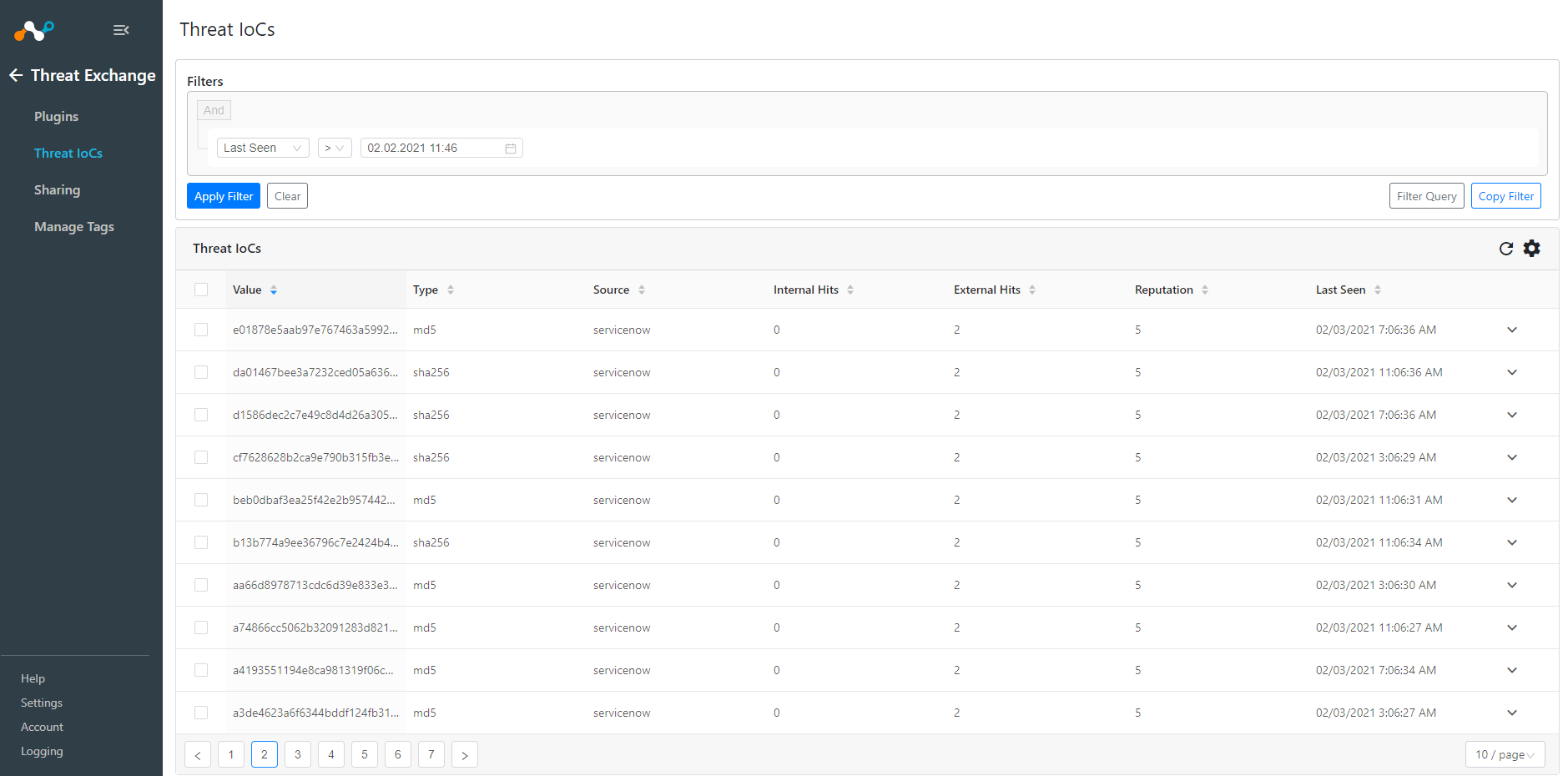
In your Netskope tenant, go to Policies > File, select your custom File Profile, and then click File Hash.
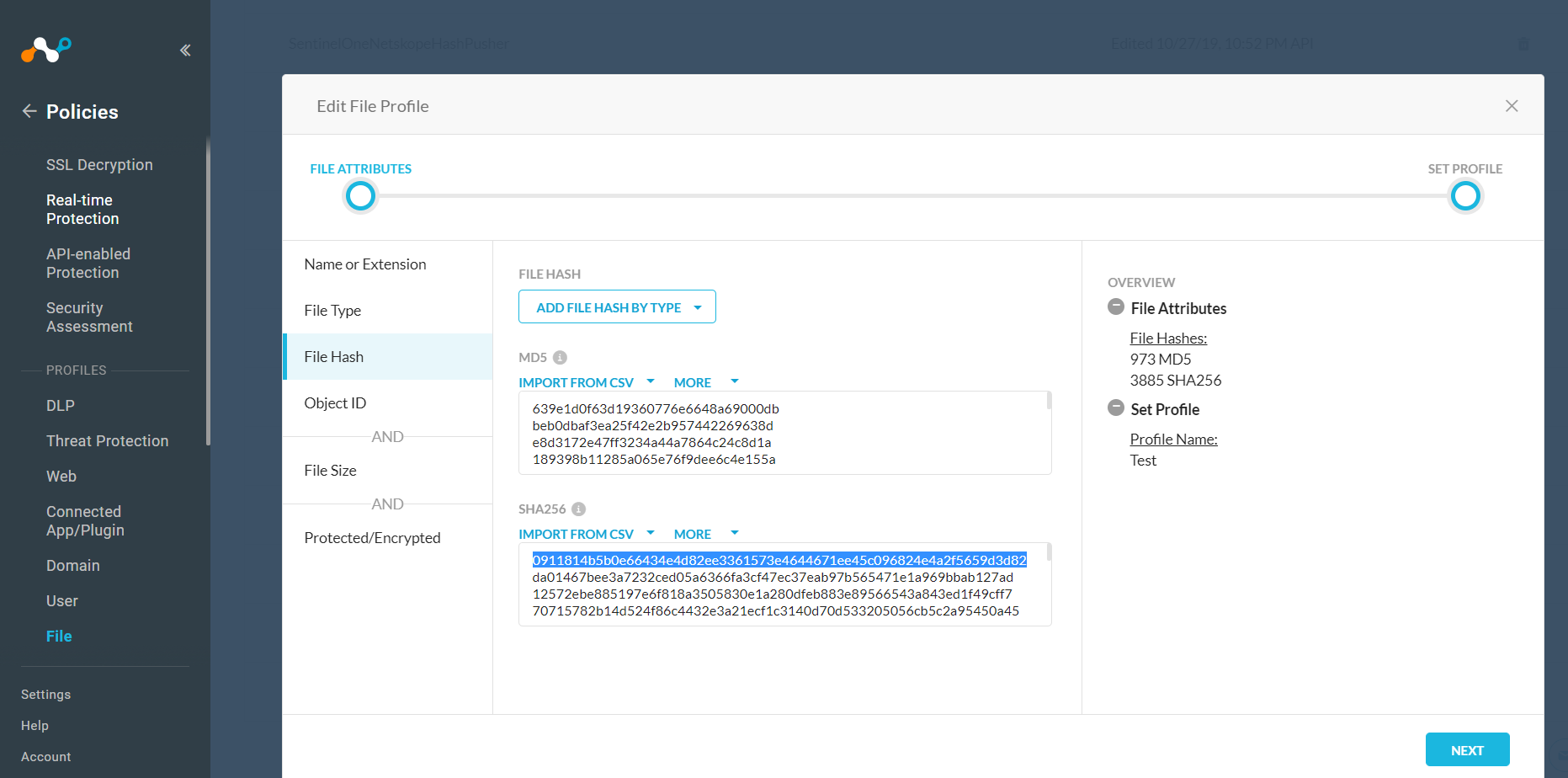
In your ServiceNow Console, click Threat Intelligence > Observables.
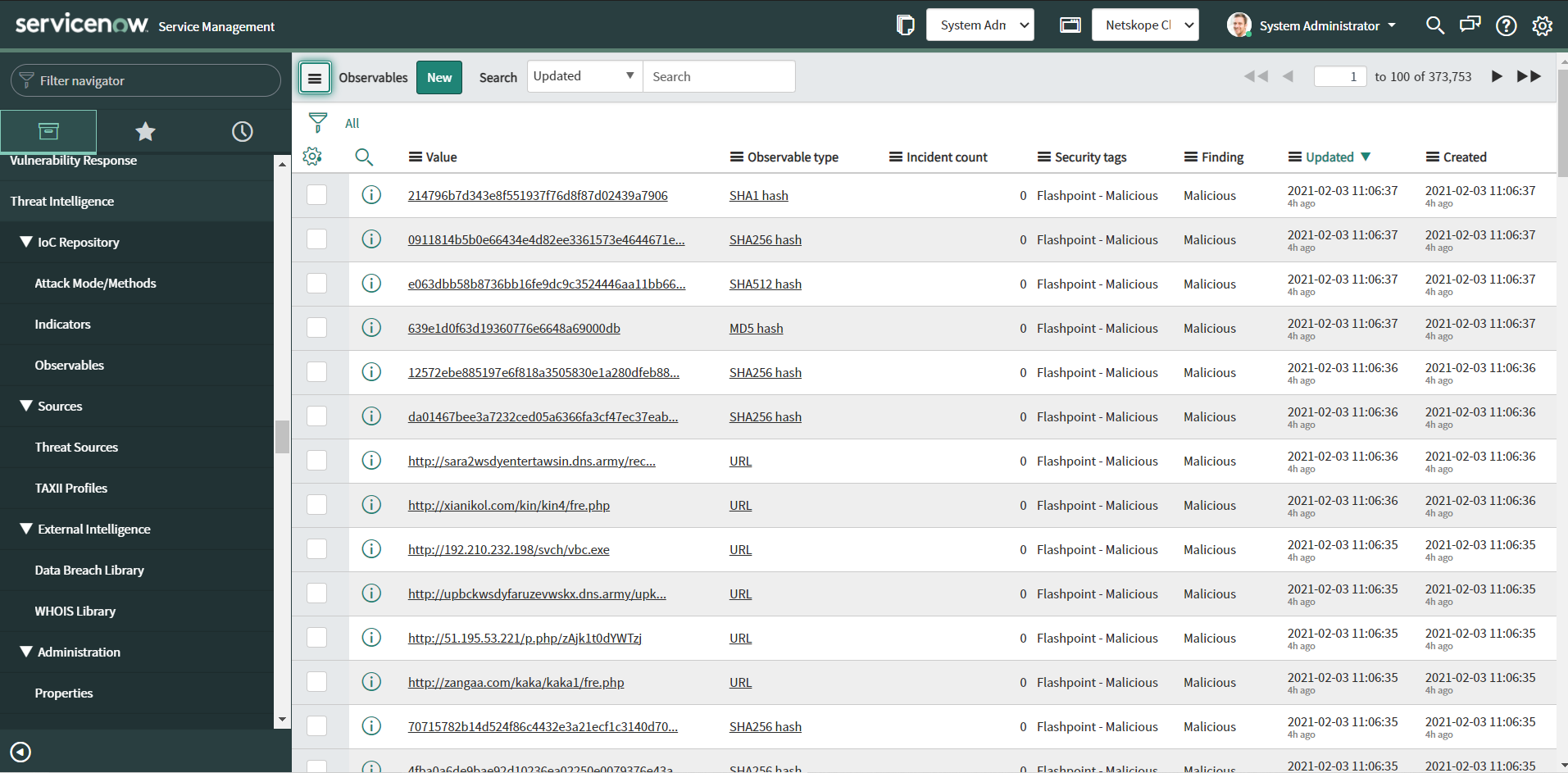
If data is not being brokered between the platforms, you can look at the audit logs in Cloud Exchange. In Cloud Exchange and click Logging. Look through the logs for errors.
